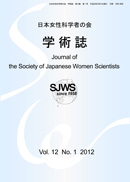Aldosterone is traditionally viewed as a hormone regulating the homeostasis of electrolytes, body fluid volume, and blood pressure. Recently, aldosterone emerged as a deleterious hormone in the cardiovascular and renal system. We examined whether the aldosterone/mineralocorticoid receptor (MR) system is involved in the process leading from metabolic syndrome to kidney disease. We demonstrated that SHR/cp, a rat model of metabolic syndrome, was susceptible to podocyte injury, proteinuria, and chronic kidney disease. Aldosterone excess caused by adipocyte-derived aldosterone releasing factors was suggested to underlie the nephropathy, and MR antagonist ameliorated the injury. High salt reduced plasma aldosterone, but paradoxically augmented MR activation and exacerbated cardiac and renal injury, which was mitigated by MR antagonist. These findings corroborate our hypothesis that obesity and salt, two cardinal features of modern society, cause MR overactivation and cardiorenal diseases. Furthermore, we identified an alternative pathway of MR activation by Rac1 GTPase. RhoGDIα knockout mice, a kidney-specific Rac1 activation model, developed albuminuria, podocyte damage, and glomerulosclerosis. The knockout mice exhibited enhanced MR signaling despite normoaldosteronemia, and MR antagonist dramatically abrogated renal impairment. Importantly, Rac-sepcific inhibitor substantially ameliorated renal injury, concomitantly with repression of Rac1 and MR activity.
In vitro transfection studies provided direct evidence of Rac1-mediated MR activation. The “Rac1-mediated MR activation” was also critically involved in angiotensin II/salt-induced nephropathy, Dahl salt-sensitive hypertension, and oxidative stress-evoked cardiac injury. In conclusion, our findings suggest that MR activation plays a pivotal role in the pathogenesis of chronic kidney disease in metabolic syndrome, and that MR may be activated both aldosterone dependently (via aldosterone releasing factors) and independently (via Rac1). MR antagonists, or agents that modulate MR activity such as Rac inhibitors, are promising renoprotective drugs in metabolic syndrome, although long-term effects
on renal outcomes, mortality, and safety need to be established.
View full abstract
